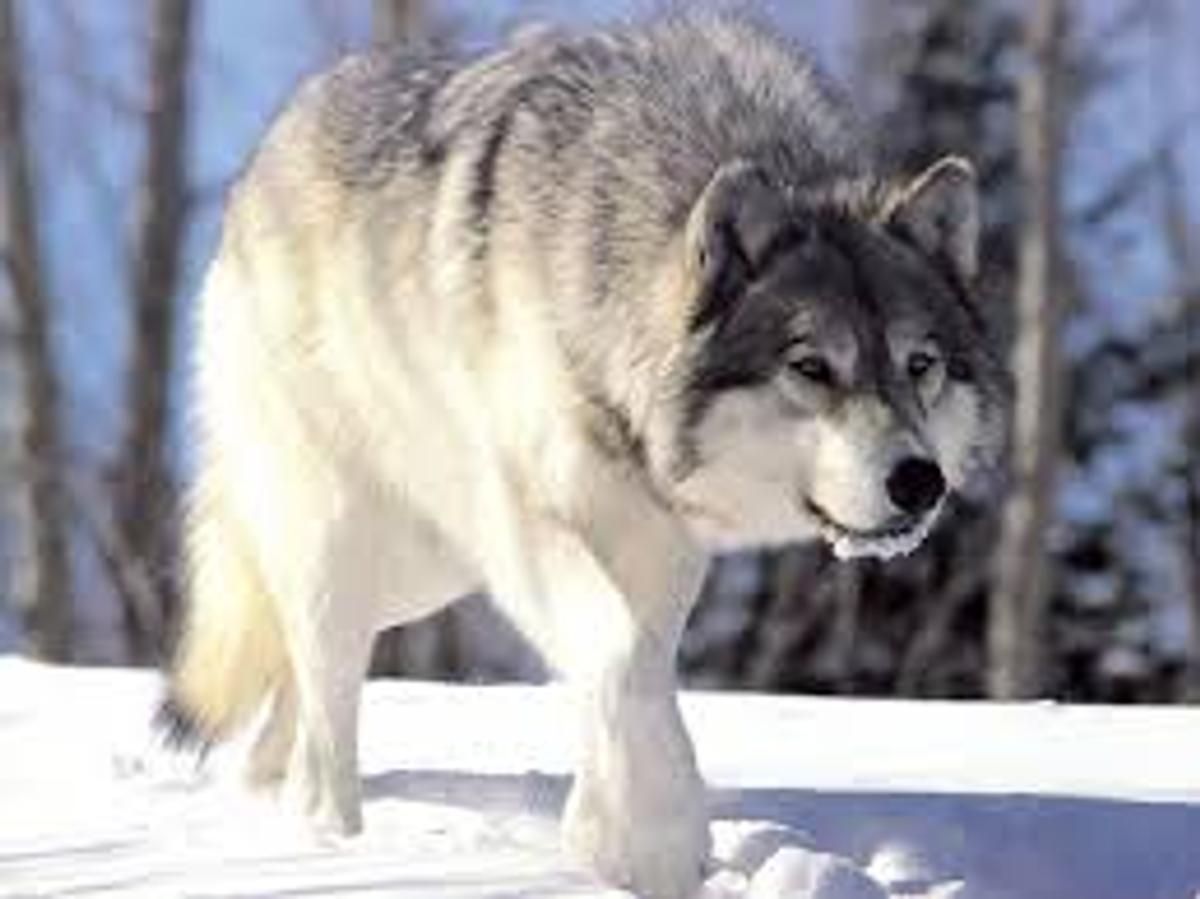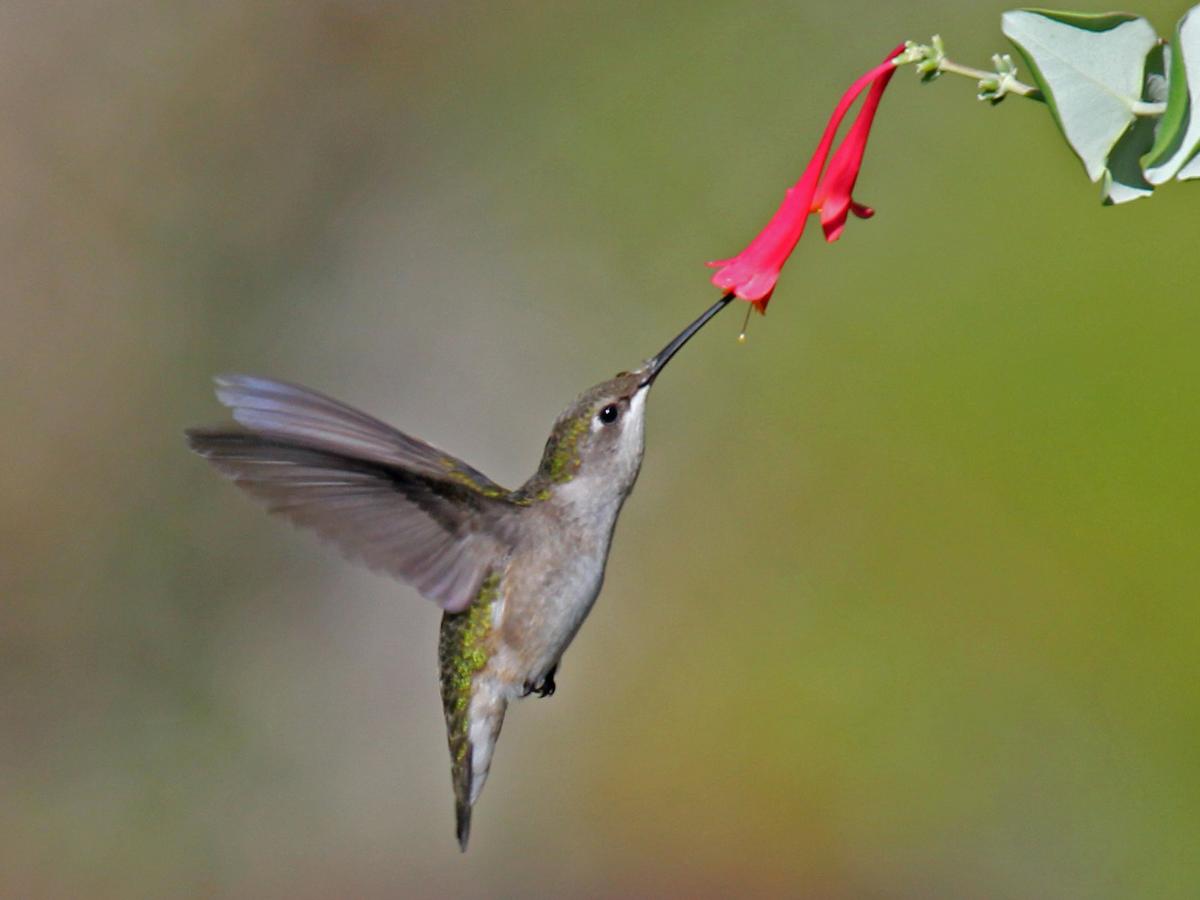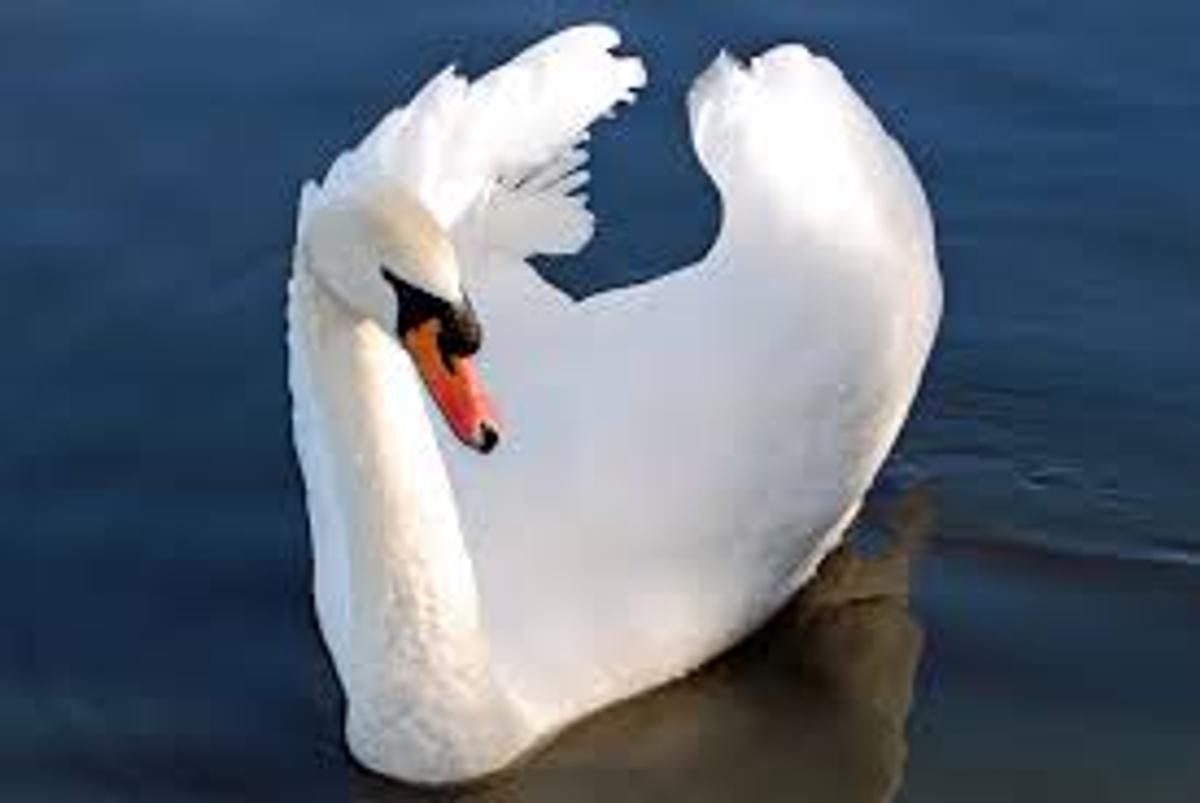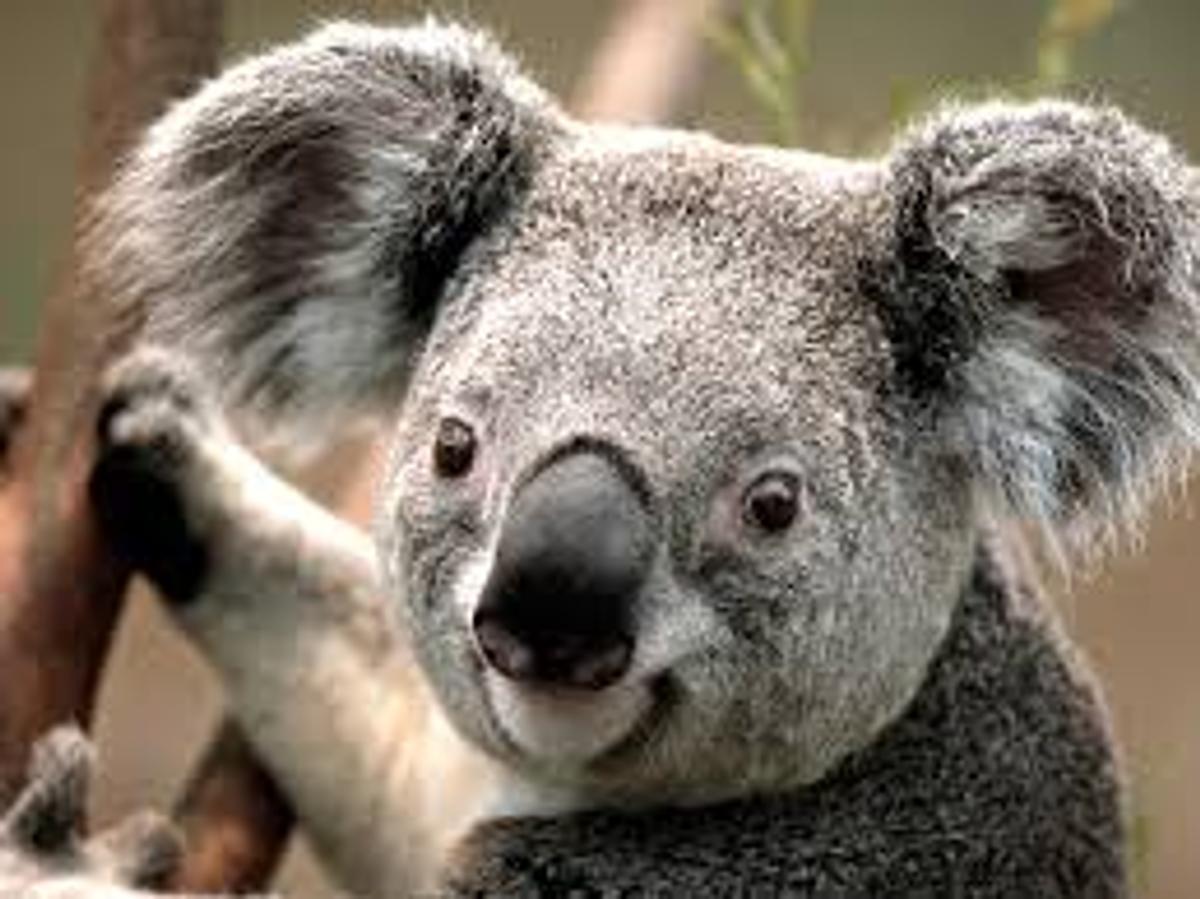Grade 5 Information Reports

Writing information reports requires students to research, summarise and logically order information under headings that fit with their chosen topic. The Year 5 students selected an interesting animal to research and report on.
Grey Wolves
The Grey Wolf is part of the Canidae family (or simply the dog family). It's scientific name is Canis Lupas. The Grey Wolf is an animal that looks nearly exactly like a dog. They mostly live in North America and they hunt and scavenge for their food there. Grey Wolves are nearly classified as endangered, although their litters are reasonably large.
Appearance:
Grey Wolves can range in shape size and colour. They can be grey, black, white, brown and red. They can even be a mix of the above colours. Their fur is thick with a soft undercoat. A Grey Wolf's fur is short in the summer and long in the winter. A Grey Wolf can weigh from 25-60kg, they can be from 60-90cm tall and they are usually about 1.5cm long. They have long legs which help them run at up to 48km per hour. A Grey Wolf's paw has bristles that help it walk on slippery surfaces without falling over. Like most dogs, a Grey Wolf walks on its toes. They have hard and blunt toenails.
Habitat:
A Grey Wolf is highly adaptable to most environments. They are found in deserts, forests, mountains, tundras and plains. They mostly live in Canada and Alaska. When a Grey Wolf chooses a habitat, it needs to be big enough to supply prey for the whole pack of wolves.
Diet:
Grey Wolves are carnivorous animals, which means that they eat meat. They hunt and travel in packs of 7-8 wolves, killing off weak and injured hoofed animals (such as Elk, Deer, Caribou and Moose). They also eat small animals (e.g. Rabbits and Beavers). Grey Wolves sometimes scavenge, meaning that they eat animals that have already died. They can eat up to 9kg of meat in a single meal. Grey Wolves have sharp teeth and strong jaws which help them eat their food.
Reproduction:
When a Grey Wolf chooses a mate to breed with, they usually have a life-long bond. The breeding season stretches from January to March. The litter size for a Grey Wolf is 4-7 pups. The female wolf digs a den and the pups are born inside the den. Grey Wolves are born blind and deaf. The pack cares for the pups until they are mature (10 months) and can hunt with the pack. Grey Wolves are ready to breed at 2-3 years. As a result of habitat loss, fighting over land with humans and the fear of Grey Wolves themselves, Grey Wolves are on the verge of endangerment even though they breed considerably fast.
Grey Wolves have their similarities and differences to domestic dogs, including their diet, physical features, habitat and reproduction.
Written by: Immogen Hallahan - Year 5
Hummingbirds
Hummingbirds (Trochilidae) are a member of the ‘Aves’ (bird) family. Hummingbirds come in different colours and sizes depending on the species. Hummingbirds are omnivores often found in tropical environments. Hummingbirds are also an endangered species of birds, as of habitat loss and climate change
Features:
Hummingbirds vary in colours and sizes, determined by the species of Hummingbird. They weigh 2-6 grams, and can grow up to 20cm long. Hummingbirds have a wingspan of 9-26cm long. An average Hummingbird has a lifespan of 4 years however, they can live longer. They are the only species of bird to be able to fly backwards, and their hearts beat 1,260 times a minute. Hummingbirds are very territorial birds, and they have been known to chase other Hummingbirds and larger birds, such as hawks, away. They have a long pointed beak and extendible tongue to allow themselves to gather nectar from deep inside flowers. Hummingbirds have special features, like their long pointed beak and tongue, to allow them to eat for survival.
Diet:
Hummingbirds are omnivorous birds. A Hummingbird’s diet consists of flower nectar, tree sap, pollen and insects. Their fast breathing rate, fast heartbeat and high body temperature require that they eat often. Hummingbirds also eat 2x their body weight every day, meaning they eat around 4-12 grams daily. Hummingbirds prey on insects and spiders for protein, especially when feeding their young. As Hummingbirds feast on things like pollen and nectar, they tend to live in tropical areas.
Habitat:
Hummingbirds are mostly found in the Western Hemisphere. They mostly live in warm, tropical places, and live in the bushes, trees and vines around them. Hummingbirds can also live in desert areas, coastal regions, forest regions and meadows. They migrate to warmer places to breed. Hummingbirds are facing extinction as of habitat loss and destruction.
Threats:
Decades ago, humans used to hunt Hummingbirds for their colourful feathers. Nowadays, Hummingbirds face extinction as of habitat loss destruction. The conservation status of Hummingbirds is endangered, and could result in extinction. Climate change also affects Hummingbirds. Climate change can affect the migration patterns of Hummingbirds, causing different species found outside their normal range, where food is harder to find. Hummingbirds are endangered as of habitat loss and destruction.
Hummingbirds are unique creatures, with special features and an omnivorous diet. These small, colourful birds are found in tropical areas and are threatened by habitat loss and destruction.
By Michelle Kim – Year 5
Swans
A Swan (also known as a Cygnus Atratus) is a type of bird found in most parts of the world. They rely on their habitat to produce their diet while keeping them safe from threats.
Features:
Swans are known for their unique features. There are over 7 known species of Swans such as the Black Swan, Black- necked Swan, Coscoroba Swan, Mute Swan, Trumpeter Swan, Tundra Swan and Whooper Swan. An average Swan has a weight of 10-15kg and a wingspan of 2-3 metres. Swans have powerful wing which help fly and scare away any threats. Swans have webbed feet which help paddle through the specie but also the area which it lives in.
Habitat:
Swans are found almost everywhere in the wold except in Africa and Antarctica. They live along large, shallow wetlands and open water. When it comes to laying eggs, Swans build their own nests out of twigs and leaves. A female Swan (known as a Pen) may lay 3-9 eggs at a time. The baby Swans are called Cygnets. Overall, Swans live in most places and their habitat is hugely dependent on their diet.
Diet:
Swans are hugely impacted by their diet to survive, they are omnivorous birds. Although they are omnivorous they have a very vegetarian diet. Swans eat underwater vegetation such as seaweed and other aquatic plants. Swans eat insects both in water and land and occasionally they eat small fish. Their long necks assist them to take their food from diving down. Although Swans are large and fierce birds today they are threatened by predators.
Threats:
Today, Swans are threatened by predators and their Conservation status stands threatened. A few natural predator of a Swan are wolves, raccoons, foxes and the human which hunts for the Swan’s meat and feathers. These predators are not only threating on the Swan itself but also the eggs and the baby Cygnets. These predators mean the Swan has to protect Cygnets from threats. Swans are also affected by water pollution which is caused by bacteria, chemicals and waste water. This makes the water unclean and makes living in water very difficult. Swans are also suffering from habitat and diet loss. Although Swans aren’t extinct, due to all threats the population is declining.
In conclusion, Swans are one of the largest aquatic birds that are known for their physical features and are found almost everywhere in the world. They are omnivorous birds and the number of them are decreasing due to the predator and other treats.
By Sithuli Mendis – Year 5
Koalas
Koalas, (also known as Phascolarectos Cinereus) are a grey, furrish animal that live in trees in the forest of Australia. Koalas are also herbivorous marsupials.
Koalas have a unique physical appearance for example, they have grey fur except for their stomach that is white. These herbivorous animals also have furry ears and human-like fingertips/fingerprints. Koalas eat a lot of leaves so they have special pouches in their cheeks to store leaves for later. From all the tree hugging, they can smell of musk and eucalyptus because of the trees in their habitat.
Koalas live in Queensland, NSW, Victoria and South Australia. You can only find Koalas in the wild in Australia. These hairy marsupials can live in places from coastal islands to tall eucalyptus tree forests and can live in the wild from 13 to 18 years. Did you know that Koalas have special eucalyptus trees? They have shelter trees, rest trees and food trees. To get to other trees, koalas have to rely on their hard claws and strong limbs to travel from branch to branch.
A Koalas diet are very few things. It mostly eats eucalyptus leaves but for most animals, eucalyptus leaves are poisonous to them but definitely not for the koala! They have a special bacteria that helps them to digest. Their average diet includes up to 500 grams per day! Did you know that the leaves that these marsupials eat are high in fibre and low in nutrients?
These herbivorous marsupial that live in Australia have been around since when the British settlers came to Australia! They should be here for generations to come!
By Jandrei Nava Orozco




